When Art Is More than Art: Kehinde Wiley
Two floors above the Adams show were paintings and bronze sculptures by Kehinde Wiley. Although only a small percentage of the general population probably has any idea who Wiley is, he might become the finest and most influential artist of the coming decades. I hope so. He is already well known in the art world. He was acclaimed in recent years for his brilliant portrait of Barack Obama. It wasn’t in the deYoung show, but it is a very fine candid and empathetic reflection of the president in a contemplative mood.
 Screen Shot 2023-07-16 at 4.25.13 PM
Screen Shot 2023-07-16 at 4.25.13 PM
(Courtesy, Smithsonian)
Wiley deserves to be widely known, and not merely because the technical quality of his art is astounding. In both bronze and paint it equals that of any living artist, and his versatility is amazing. His displayed paintings were big, even huge, and filled with detail. They were so finely rendered (with precise and tiny brushstrokes) it is hard to image how anyone could have painted them so quickly (between shows). They were exclusively figurative, exclusively depicting Black men and women lying or sitting on various backgrounds, often foliage. Each figure’s details were precise, nearly photo-realistic, and rendered with extraordinary technical skill.
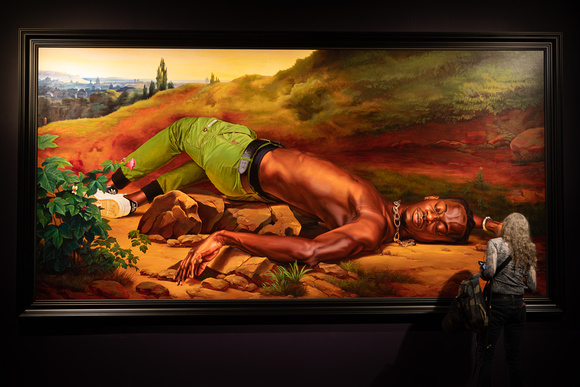 131A7204-Enhanced-NR
131A7204-Enhanced-NR
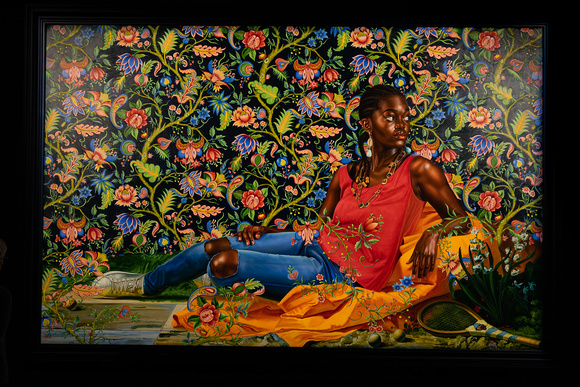 131A7136-Enhanced-NR
131A7136-Enhanced-NR
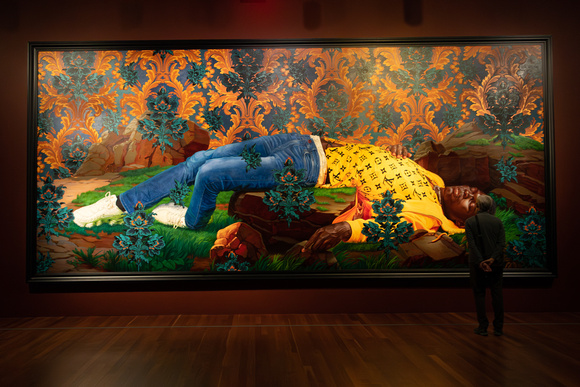 131A7171-Enhanced-NR
131A7171-Enhanced-NR
Detail:
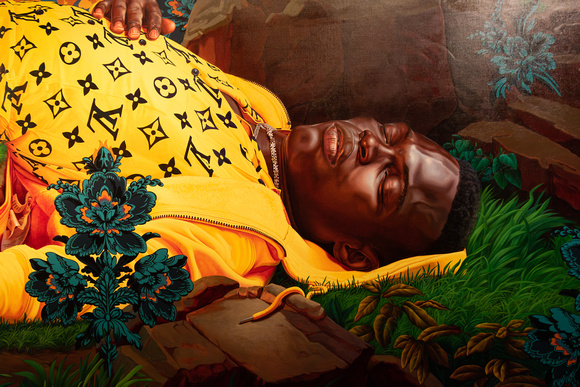 131A7172-Enhanced-NR
131A7172-Enhanced-NR
 131A7119-Enhanced-NR
131A7119-Enhanced-NR
Detail:
 131A7125-Enhanced-NR
131A7125-Enhanced-NR
The paintings’ technical excellence was not their most striking aspect. They were emotionally overwhelming. They all depicted Black men and women, most young and probably none over 30, all attractive, in repose that implied death or approaching death. They depicted beautiful people, not in the sense of stylized and commodified beauty, but in the sense of vibrant and vigorous young humans with perceptible, believable personalities. Some seemed more placid and at peace, some seemed more strident and determined.
 131A7109-Enhanced-NR
131A7109-Enhanced-NR
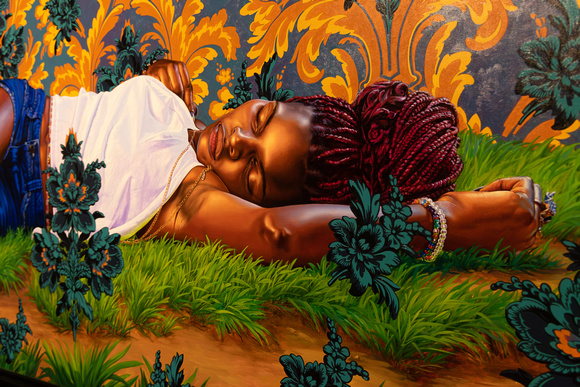 131A7117-Enhanced-NR
131A7117-Enhanced-NR
 131A7211-Enhanced-NR
131A7211-Enhanced-NR
The apparel and figures were remarkably detailed. But the paintings’ most striking visual feature was each subject’s warm, luminous skin tones, ranging from rich browns to glowing highlights. The paintings’ details seemed intended to show that the subjects were important, simply because they were ordinary humans (none exhibited badges of official or athletic - apart from one tennis racket - or social significance), that the extraordinary realism and quality were intended to emphasize the subjects’ individual and collective importance, and that even their burnished and idealized depictions (the glowing highlights suggested modeling under studio lights, an experience few ordinary humans, Black or not, share) were meant to imbue each individual with inherent value and significance.
The collective message was compelling. I don’t recall any viewers talking. They slid silently from one vast canvas to another.
There were also fine bronze sculptures, also of young Blacks seemingly in death. The pieces were analogues to well-known classical art (The Dying Gaul, for example). Dramatic lighting caused shadowing that made it difficult for illustrative photography. The details were meticulous: fabric textures and seams and creases and folds and stitching perfectly rendered, faces and forms handsome and so realistic viewers could believe they would recognize the subjects if they saw them on the street.
 131A7115-Enhanced-NR
131A7115-Enhanced-NR
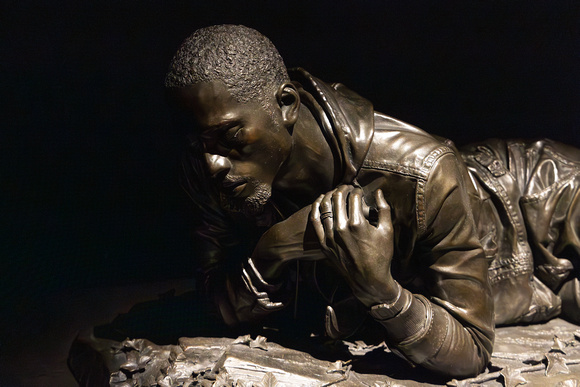 131A7127-Enhanced-NR
131A7127-Enhanced-NR
 131A7140-Enhanced-NR
131A7140-Enhanced-NR
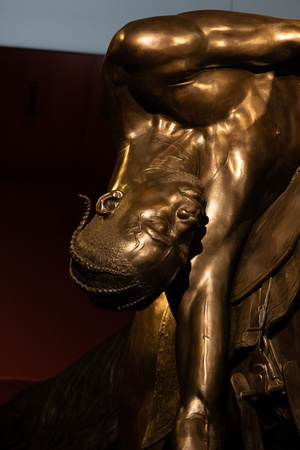 131A7163-Enhanced-NR
131A7163-Enhanced-NR
 131A7191-Enhanced-NR
131A7191-Enhanced-NR
Of course, this message of value and importance was simply the build-up for the message that these ordinary humans were, despite their idealized beauty and prepossession, collectively dead or destined to die soon, and were not to live on, as they implicitly deserved. Why would Wiley convey such a message? And if he wanted to show that particular social forces contributed to their deaths, why not depict those forces somehow? The paintings depict no signs of struggle or violence, beyond unexplained, unwarranted, premature death, itself.
Comments


After a lifetime of mainly expressing myself with words, my postings here will mainly rely on images. They will speak for themselves to some extent, but I'll usually add a few comments of explanation. I've taken photographs for decades, since the 1950's, inspired in part by my father's photographic skill. Four years of photo assignments and quality darkroom time eventually gave way to decades of casual and family picture-taking. I re-immersed myself when I left film and turned to digital.